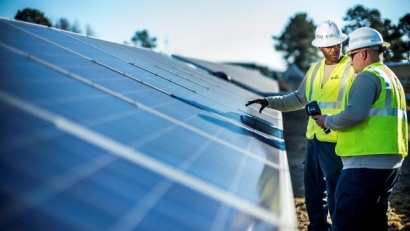
Throughout the decade, Duke Energy has been building a solar portfolio that now includes almost 70 sites in 10 states, with a total capacity of 1.1 GW. At peak output, that could serve energy to approximately 2 million homes.
“For nearly a decade, Duke Energy has been delivering affordable solar power to our customers. This provides significant economic benefits to our communities, while generating no environmental emissions,” said Rob Caldwell, senior vice president and president of Duke Energy Renewables & Business Development.
Currently, the company also purchases the output from more than 3 GW of capacity in states where it serves retail customers. Taken together, the 4 GW of owned and purchased renewables make up more than 9 percent of Duke Energy’s generated electricity.
North Carolina is Duke Energy’s biggest solar state. The company owns 40 solar facilities in the state, including the 80-MW Conetoe Solar Facility in Edgecombe County, the 65-MW Warsaw Solar Facility in Duplin County and the 60-MW Monroe Solar Facility in Union County.
In April, the company said it would develop and own more major projects in the state. Also, Duke Energy Progress, the utility that serves portions of North Carolina and South Carolina, has been on the annual Top 10 list for utilities adding solar for the past seven years.
In Florida, Duke Energy has over 100 MW of solar generation in operation and four more solar plants targeted for operation by the end of March 2020. That represents an additional 270 MW of clean energy for customers. These investments are part of an overall solar generation expansion plan to grow Duke Energy Florida’s solar portfolio to 700 MW by 2022.
California is Duke Energy’s second-largest solar state, with 12 sites and more than 340 MW of capacity. Duke Energy Renewables continues to expand in the top solar state in the nation.
“Our future shows even more solar being built and operated by Duke Energy,” added Caldwell. “One GW is a notable milestone, but we have plans for much more.”

